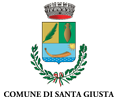A JOURNEY THROUGH ROMANESQUE
Romanesque itinerary in north-eastern Sardinia
The itinerary suggests a journey through territories showing different features, to discover Romanesque churches of north-eastern Sardinia. The route starts from Anglona, one of the greenest and most beautiful regions of the island, where the countryside of Bulzi conserves the church of San Pietro del Crocifisso, standing out for the decorative use of dichromatic masonry on the façade. Going down towards Ozieri, the landscape changes are evident, being divided between the wide extent of the plain of Campo di Ozieri and some rises of volcanic origin. This territory suggests a visit to a site hosting the Sant’Antioco di Bisarcio, one of the most complex and fascinating monuments of the Sardinian Romanesque. Not far, close to the river Coghinas, a series of small churches in the region of Oschiri are noteworthy, either for their evocative location and for the construction material employed. Among them is the former cathedral of Nostra Signora di Castro. Two detours are worth doing to pay a visit to the churches of San Simplicio, Olbia, and San Pietro, Galtellì. The first is remarkable for the use of granite as a building material; the second is a main stopover for its Romanesque frescoes.
Itinerary map
![]() Accommodation1730|1731 [2]
Accommodation1730|1731 [2]
![]() Art and culture1546 [1]
Art and culture1546 [1]
![]() Handicrafts and typical products1521 [1]
Handicrafts and typical products1521 [1]
![]() Cultural centres1570 [1]
Cultural centres1570 [1]
![]() Cinemas and theatres1594 [1]
Cinemas and theatres1594 [1]
![]() Nature and wellness1618 [1]
Nature and wellness1618 [1]
![]() Restaurants1657|1658 [2]
Restaurants1657|1658 [2]
![]() Leisure1691 [1]
Leisure1691 [1]
























